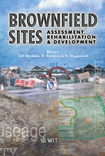Concepts Associated With A Unified Life Cycle Analysis
Price
Free (open access)
Transaction
Volume
55
Pages
Published
2002
Size
598 kb
Paper DOI
10.2495/BF020381
Copyright
WIT Press
Author(s)
G. Whelan, M.S. Peffers & D.A. Tolle
Abstract
There is a risk associated with most things in the world, and all things have a life cycle unto themselves, even brownfields. Many components can be described by a \“cycle of life.” For example, five such components are life form, chemical, process, activity, and idea, although many more may exist. Brownfields may touch upon several of these life cycles. Each life cycle can be represented as independent software; therefore, a software technology structure is being formulated to allow for the seamless linkage of software products, representing various life-cycle aspects. Because classes of these life cycles tend to be independent of each other, the current research programs and efforts do not have to be revamped; therefore, this unified life-cycle paradigm builds upon current technology and is backward compatible while embracing future technology. Only when two of these life cycles coincide and one impacts the other is there connectivity and a transfer of information at the interface. The current framework approaches (e.g., FRAMES, 3MRA, etc.) have a design that is amenable to capturing 1) many of these underlying philosophical concepts to assure backward compatibility of diverse independent assessment frameworks and 2) linkage communication to help transfer the needed information at the points of intersection. The key effort will be to identify 1) linkage points (i.e., portals) between life cycles, 2) the type and form of data passing between life cycles, and 3) conditions when life cycles interact and communicate. This paper discusses design aspects associated with a unified life-cycle analysis, which can support not only brownfields but also other types of assessments.
Keywords




